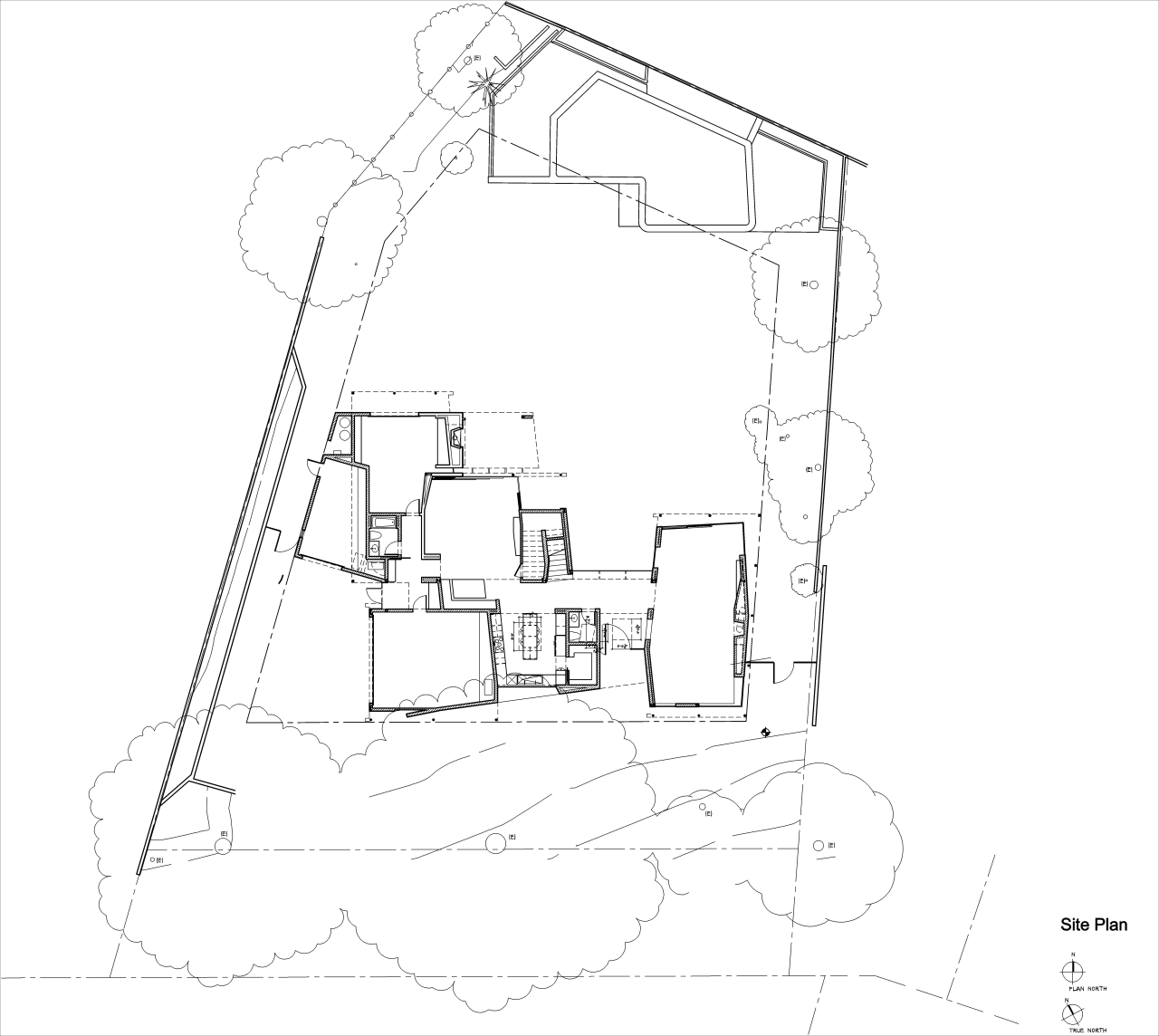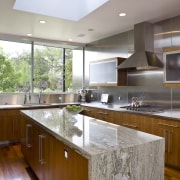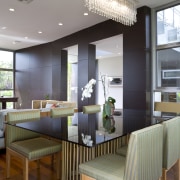Looking to the future
Suburban life takes on a whole new connotation in this clean-lined residence that favours transparency over curtaining and closed-in walls
Following tradition and providing privacy at all costs are no longer architectural imperatives for a new wave of out-of-city residences. Today, design integrity, generous open-plan interiors and crisp material palettes combine with global priorities of energy efficiency and sustainability.
The clients' wish list for this suburban home was a fairly open one simply specifying five bedrooms and bathrooms, and a desire for a modern, ecologically sound residence. Architect Trevor Abramson spent time with the family, observing their day-to-day domestic life, and responded by creating an arresting design, loosely comprising four cubes that appear to float in the air. The cubes provide visual impact, and also play an important part in the home's see-through, open-air feel.
"The design is about transparency and an easy connection with the environment," Abramson says. "Approaching the front door, set between two stands of cubes, you look straight through a glass wall out to the swimming pool in the back yard and the trees beyond. Similarly, the white cubes themselves allow you to read the layout of the interior from side to side and from top to bottom."
Essentially both levels of the house are divided in two, bisected vertically by the entranceway. Downstairs, one side is devoted to the living room, while the other is made up of public spaces, including a family room and adjoining kitchen. Upstairs, one wing of the house contains the master suite, and across a connecting bridge, above the entrance, lie the children's bedrooms and bathrooms. The linking bridge is used as a communal study space.
While the white cubes provide visual interest and neatly divide the interior, they also contribute to the home's sustainability and energy efficiency. The boxes are finished in white plaster and raised on pilotis, or supporting columns, but are incomplete. Instead of being a four-sided object, each box has a missing side replaced by high-density Trespa panels coated with phenolic resin which are extruded upward from the first floor.

"Trespa is a man-made product with the look of wood, but does not have the issues of cupping or splitting that would likely occur with real wood in this warm, moist climate," says Abramson.
Installed as rain screens, the Trespa panels are punctured at strategic intervals with stainless steel inserts that show through from behind. The set-back metal inserts demonstrate at a glance that these walls are non-load bearing an effective, and attractive, eco-friendly inclusion.
"Each rain screen is like a floating facade set only 2.5cm from the cube's internal wall," says the architect. "Rain screens provide breathing space for air to circulate and keep the full impact of the sun off the room's exterior surfaces. That means less heat build-up to have to cool down.
"The screens float above the vapour barrier, allowing the building skin to breathe."
However, the dramatic rain screens are only part of what is a whole-house focus on energy efficiency. Photovoltaic cells are tucked out of sight and the residence features grey water reclamation, recycling shower and tap water for irrigation.

With the cube structures seemingly floating in air, and one in four of their facades set clear of the internal walls, the effect is of an intermingling of the outdoor and indoor environments. In some areas the exterior wood panels are carried through on the interior as wall partitions. Inside and out there is a repeated motif of planes not quite meeting, or running past each other all adding to the home's open, airy, deconstructed aesthetic.
"The same impression of transparency you receive at the front door increases as you move through the interiors, where floor-to-ceiling glazing gives multiple points of entry to the rear yard."
The residence presents a strong architectural language throughout, made up of layers, transparency and a consistency of detailing on all levels, says Abramson.
"Wherever you are in the house, and wherever you look, you are looking through layers to something else the pool, the trees, or the sky appear in your line of vision, drawing the outdoors in and making you feel at one with the surrounding greenery."
Credit list
Interior design
Kitchen manufacturer
Structural engineer
Roof
Flooring
Kitchen cabinets
Splashback, sink
Refrigerator
Bath
Story by: Charles Moxham
Home kitchen bathroom commercial design
Diving into nature
Personality plus
Classic looks, contemporary efficiency














